Tech
Apple possibly saving billions by moving Macs to Apple Silicon – TechSpot
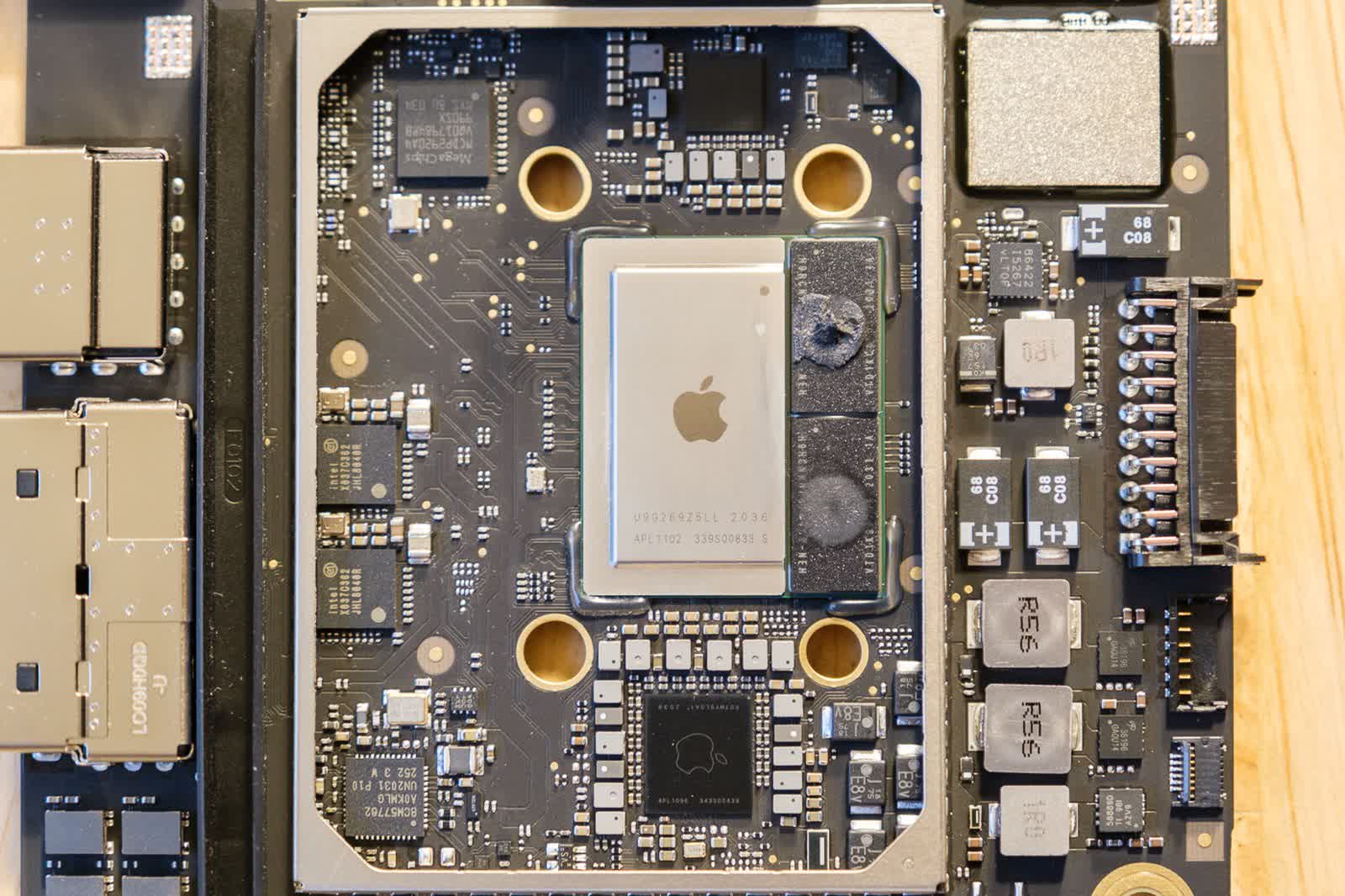
Bottom line: By the time Apple finishes transitioning the entire Mac lineup to Apple Silicon — about 18-20 million Macs are sold yearly worldwide — the company will have saved billions of dollars in production costs. Users will get better performance and energy efficiency, but not necessarily lower prices of their shiny aluminum computers.
It’s been speculated that by switching to its own M1 SoC, Apple would effectively save money in terms of component costs. Analyst Ming Chi-Kuo previously said the bill of materials could be reduced by 40 to 60 percent when it comes to using Apple Silicon as opposed to using Intel’s latest CPUs.
Sumit Gupta, IBM’s vice president of AI strategy, recently made an analysis based on estimated shipments of Macs and M1 chipset’s estimated production cost of $40 to $50 per unit. Then he compared that to the estimated cost of an Intel Core i5 dual-core CPU in the MacBook Air, which is anywhere between $175 to $200, as well as the Intel Core i5 quad-core found in the MacBook Pro, which costs anywhere between $225 to $250.
The resulting savings would be $2.5 billion on a year like 2020, when the supply chain took a hit as a result of the pandemic. That’s assuming that Gupta’s estimates of 5.4 million MacBook Air units and 8.6 million MacBook Pro 13 units align with Apple’s internal sales numbers. Based on the component price estimates, Apple has spent around $3.2 billion on Intel processors alone for those 14 million Macs, whereas the same amount of M1 chips would cost $697 million. And that doesn’t include Mac minis.
Granted, this is just an estimate, but according to Morgan Stanley analyst Katy Huberty, lower-tier Macs made up 91 percent of all Mac shipments in the past twelve months, which could be part of the reason why Apple transitioned these machines first.
Something we can safely assume for now is that the company won’t be making its Macs more affordable, save for the M1 Mac mini, which is now $100 cheaper than the last generation. This was made clear when the company explained the new M1 Macs would come with a familiar design as well as a familiar price tag, even as the new machines can only be configured with either 8 or 16 GB of RAM.
Before you get out your pitchforks, it’s important to understand that it may take a while before Apple’s higher margins can materialize in a meaningful way. This is because the M1 is manufactured using TSMC’s 5 nm process node, which is still relatively immature and possibly prone to yield issues, to say nothing of the EUV tooling costs. Essentially, the M1 could be far more expensive than the $40 to $50 estimate, potentially north of $100.
Back in September, it was revealed that a single 5 nm wafer from TSMC could cost as much as $17,000. This is more than what Apple, AMD, and other companies are paying for a 7 nm wafer carrying the chips used in their latest products. So far, TSMC claims it’s getting better yields on the 5 nm process node when compared to 7 nm, but we don’t know if that necessarily translates into lower prices when you consider the demand.
It’s worth noting that based on early reviews and first impressions, Apple’s new M1-based Macs rival previous-gen Intel-based machines that are more expensive and have lesser battery life. This redefines the notion that there are lower end Macs and higher end Macs, since the M1 Macs have been shown to perform surprisingly well against some existing ones costing up to three times more, such as the 16-inch MacBook Pro.
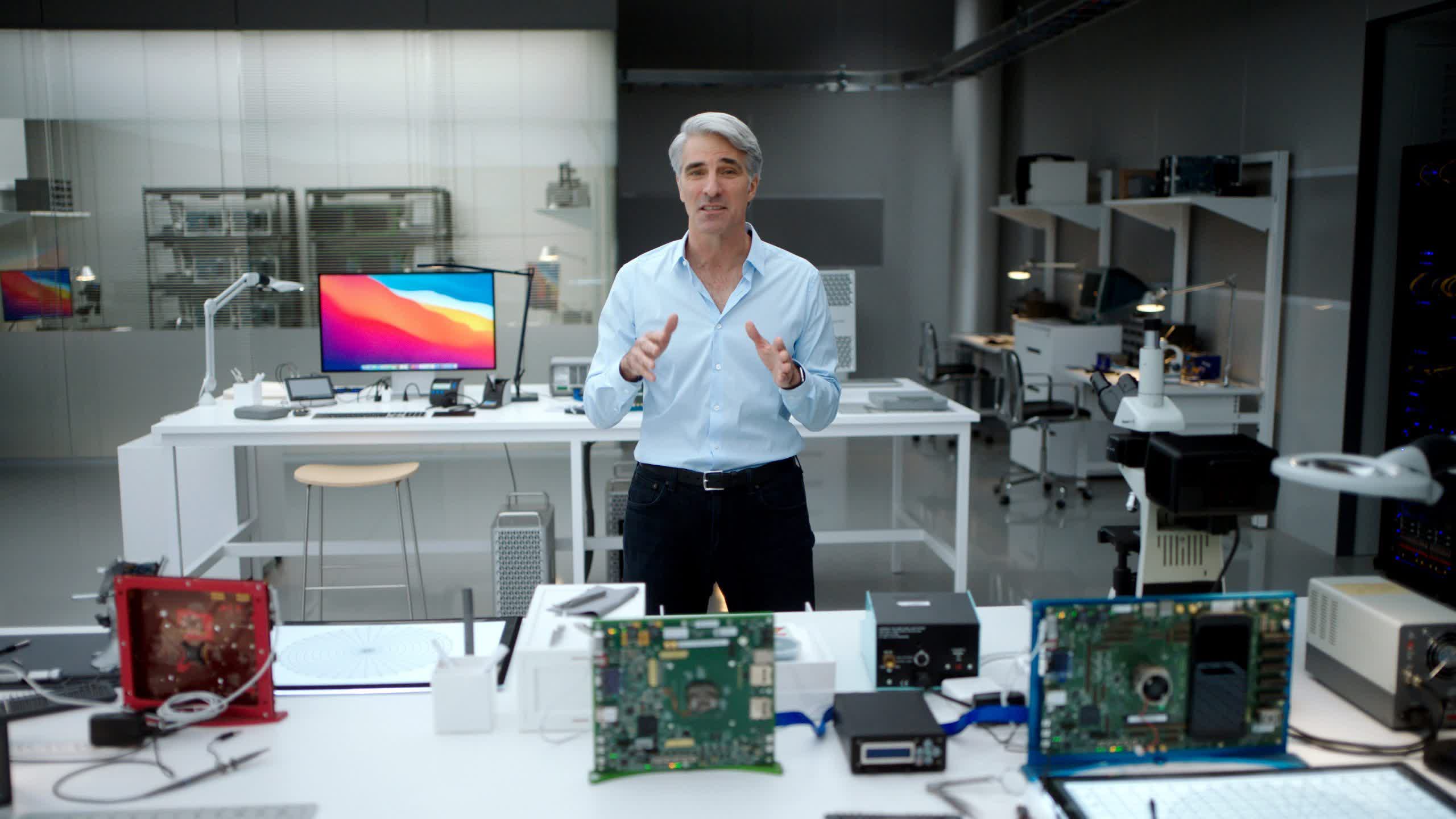
In an interview with Om Malik, Apple software engineering chief Craig Federighi, hardware technologies chief Johny Srouji, and marketing chief Greg Joswiak explained that when it comes to the M1, it’s “not about the gigahertz and megahertz, but about what the customers are getting out of it.”
Federighi noted “the specs that are typically bandied about in the industry have stopped being a good predictor of actual task-level performance for a long time. Architecturally, how many streams of 4k or 8k video can you process simultaneously while performing certain effects? That is the question video professionals want an answer to. No spec on the chip is going to answer that question for them.”
Professionals are no doubt curious to see what Apple can do to scale up Apple Silicon for the iMac, MacBook Pro 16, and the Mac Pro. Federighi says “their day will come. But for now, the systems we’re building are, in every way I can consider, superior to the ones they’ve replaced.”
Masthead credit: iFixit
Tech
How to Preorder the PlayStation 5 Pro in Canada

Sony has made it easy for Canadian consumers to preorder the PlayStation 5 Pro in Canada directly from PlayStation’s official website. Here’s how:
- Visit the Official Website: Go to direct.playstation.com and navigate to the PS5 Pro section once preorders go live on September 26, 2024.
- Create or Log in to Your PlayStation Account: If you don’t have a PlayStation account, you will need to create one. Existing users can simply log in to proceed.
- Place Your Preorder: Once logged in, follow the instructions to preorder your PS5 Pro. Ensure you have a valid payment method ready and double-check your shipping information for accuracy.
Preorder Through Major Canadian Retailers
While preordering directly from PlayStation is a popular option, you can also secure your PS5 Pro through trusted Canadian retailers. These retailers are expected to offer preorders on or after September 26:
- Best Buy Canada
- Walmart Canada
- EB Games (GameStop)
- Amazon Canada
- The Source
Steps to Preorder via Canadian Retailers:
- Visit Retailer Websites: Search for “PlayStation 5 Pro” on the website of your preferred retailer starting on September 26.
- Create or Log in to Your Account: If you’re shopping online, having an account with the retailer can speed up the preorder process.
- Preorder in Store: For those who prefer in-person shopping, check with local stores regarding availability and preorder policies.
3. Sign Up for Notifications
Many retailers and websites offer the option to sign up for notifications when the preorder goes live. If you’re worried about missing out due to high demand, this can be a useful option.
- Visit Retailer Sites: Look for a “Notify Me” or “Email Alerts” option and enter your email to stay informed.
- Use PlayStation Alerts: Sign up for notifications directly through Sony to be one of the first to know when preorders are available.
4. Prepare for High Demand
Preordering the PS5 Pro is expected to be competitive, with high demand likely to result in quick sellouts, just as with the initial release of the original PS5. To maximize your chances of securing a preorder:
- Act Quickly: Be prepared to place your order as soon as preorders open. Timing is key, as stock can run out within minutes.
- Double-Check Payment Information: Ensure your credit card or payment method is ready to go. Any delays during the checkout process could result in losing your spot.
- Stay Informed: Monitor PlayStation and retailer websites for updates on restocks or additional preorder windows.
Final Thoughts
The PlayStation 5 Pro is set to take gaming to the next level with its enhanced performance, graphics, and new features. Canadian gamers should be ready to act fast when preorders open on September 26, 2024, to secure their console ahead of the holiday season. Whether you choose to preorder through PlayStation’s official website or your preferred retailer, following the steps outlined above will help ensure a smooth and successful preorder experience.
For more details on the PS5 Pro and to preorder, visit direct.playstation.com or stay tuned to updates from major Canadian retailers.
Tech
Introducing the PlayStation 5 Pro: The Next Evolution in Gaming

Since the PlayStation 5 (PS5) launched four years ago, PlayStation has continuously evolved to meet the demands of its players. Today, we are excited to announce the next step in this journey: the PlayStation 5 Pro. Designed for the most dedicated players and game creators, the PS5 Pro brings groundbreaking advancements in gaming hardware, raising the bar for what’s possible.
Key Features of the PS5 Pro
The PS5 Pro comes equipped with several key performance enhancements, addressing the requests of gamers for smoother, higher-quality graphics at a consistent 60 frames per second (FPS). The console’s standout features include:
- Upgraded GPU: The PS5 Pro’s GPU boasts 67% more Compute Units than the current PS5, combined with 28% faster memory. This allows for up to 45% faster rendering speeds, ensuring a smoother gaming experience.
- Advanced Ray Tracing: Ray tracing capabilities have been significantly enhanced, with reflections and refractions of light being processed at double or triple the speed of the current PS5, creating more dynamic visuals.
- AI-Driven Upscaling: Introducing PlayStation Spectral Super Resolution, an AI-based upscaling technology that adds extraordinary detail to images, resulting in sharper image clarity.
- Backward Compatibility & Game Boost: More than 8,500 PS4 games playable on PS5 Pro will benefit from PS5 Pro Game Boost, stabilizing or enhancing performance. PS4 games will also see improved resolution on select titles.
- VRR & 8K Support: The PS5 Pro supports Variable Refresh Rate (VRR) and 8K gaming for the ultimate visual experience, while also launching with the latest wireless technology, Wi-Fi 7, in supported regions.
Optimized Games & Patches
Game creators have quickly embraced the new technology that comes with the PS5 Pro. Many games will receive free updates to take full advantage of the console’s new features, labeled as PS5 Pro Enhanced. Some of the highly anticipated titles include:
- Alan Wake 2
- Assassin’s Creed: Shadows
- Demon’s Souls
- Dragon’s Dogma 2
- Final Fantasy 7 Rebirth
- Gran Turismo 7
- Marvel’s Spider-Man 2
- Ratchet & Clank: Rift Apart
- Horizon Forbidden West
These updates will allow players to experience their favorite games at a higher fidelity, taking full advantage of the console’s improved graphics and performance.
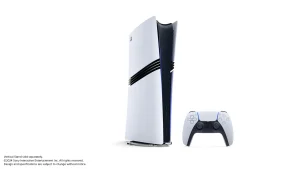
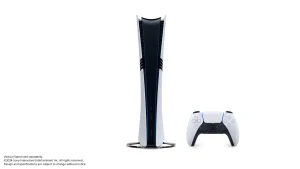

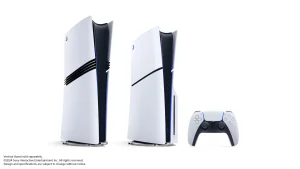


Design & Compatibility
Maintaining consistency within the PS5 family, the PS5 Pro retains the same height and width as the original PS5 model. Players will also have the option to add an Ultra HD Blu-ray Disc Drive or swap console covers when available.
Additionally, the PS5 Pro is fully compatible with all existing PS5 accessories, including the PlayStation VR2, DualSense Edge, Pulse Elite, and Access controller. This ensures seamless integration into your current gaming setup.
Pricing & Availability
The PS5 Pro will be available starting November 7, 2024, at a manufacturer’s suggested retail price (MSRP) of:
- $699.99 USD
- $949.99 CAD
- £699.99 GBP
- €799.99 EUR
- ¥119,980 JPY
Each PS5 Pro comes with a 2TB SSD, a DualSense wireless controller, and a copy of Astro’s Playroom pre-installed. Pre-orders begin on September 26, 2024, and the console will be available at participating retailers and directly from PlayStation via direct.playstation.com.
The launch of the PS5 Pro marks a new chapter in PlayStation’s commitment to delivering cutting-edge gaming experiences. Whether players choose the standard PS5 or the PS5 Pro, PlayStation aims to provide the best possible gaming experience for everyone.
Preorder your PS5 Pro and step into the next generation of gaming this holiday season.
Tech
Google Unveils AI-Powered Pixel 9 Lineup Ahead of Apple’s iPhone 16 Release
Google has launched its next generation of Pixel phones, setting the stage for a head-to-head competition with Apple as both tech giants aim to integrate more advanced artificial intelligence (AI) features into their flagship devices. The unveiling took place near Google’s Mountain View headquarters, marking an early debut for the Pixel 9 lineup, which is designed to showcase the latest advancements in AI technology.
The Pixel 9 series, although a minor player in global smartphone sales, is a crucial platform for Google to demonstrate the cutting-edge capabilities of its Android operating system. With AI at the core of its strategy, Google is positioning the Pixel 9 phones as vessels for the transformative potential of AI, a trend that is expected to revolutionize the way people interact with technology.
Rick Osterloh, Google’s senior vice president overseeing the Pixel phones, emphasized the company’s commitment to AI, stating, “We are obsessed with the idea that AI can make life easier and more productive for people.” This echoes the narrative Apple is likely to push when it unveils its iPhone 16, which is also expected to feature advanced AI capabilities.
The Pixel 9 lineup will be the first to fully integrate Google’s Gemini AI technology, designed to enhance user experience through more natural, conversational interactions. The Gemini assistant, which features 10 different human-like voices, can perform a wide array of tasks, particularly if users allow access to their emails and documents.
In an on-stage demonstration, the Gemini assistant showcased its ability to generate creative ideas and even analyze images, although it did experience some hiccups when asked to identify a concert poster for singer Sabrina Carpenter.
To support these AI-driven features, Google has equipped the Pixel 9 with a special chip that enables many AI processes to be handled directly on the device. This not only improves performance but also enhances user privacy and security by reducing the need to send data to remote servers.
Google’s aggressive push into AI with the Pixel 9 comes as Apple prepares to unveil its iPhone 16, which is expected to feature its own AI advancements. However, Google’s decision to offer a one-year free subscription to its advanced Gemini Assistant, valued at $240, may pressure Apple to reconsider any plans to charge for its AI services.
The standard Pixel 9 will be priced at $800, a $100 increase from last year, while the Pixel 9 Pro will range between $1,000 and $1,100, depending on the model. Google also announced the next iteration of its foldable Pixel phone, priced at $1,800.
In addition to the new Pixel phones, Google also revealed updates to its Pixel Watch and wireless earbuds, directly challenging Apple’s dominance in the wearable tech market. These products, like the Pixel 9, are designed to integrate seamlessly with Google’s AI-driven ecosystem.
Google’s event took place against the backdrop of a significant legal challenge, with a judge recently ruling that its search engine constitutes an illegal monopoly. This ruling could lead to further court proceedings that may force Google to make significant changes to its business practices, potentially impacting its Android software or other key components of its $2 trillion empire.
Despite these legal hurdles, Google is pressing forward with its vision of an AI-powered future, using its latest devices to showcase what it believes will be the next big leap in technology. As the battle for AI supremacy heats up, consumers can expect both Google and Apple to push the boundaries of what their devices can do, making the choice between them more compelling than ever.
-

 News12 hours ago
News12 hours agoB.C. to scrap consumer carbon tax if federal government drops legal requirement: Eby
-

 News12 hours ago
News12 hours agoA linebacker at West Virginia State is fatally shot on the eve of a game against his old school
-

 Sports13 hours ago
Sports13 hours agoLawyer says Chinese doping case handled ‘reasonably’ but calls WADA’s lack of action “curious”
-

 News23 hours ago
News23 hours agoReggie Bush was at his LA-area home when 3 male suspects attempted to break in
-

 News13 hours ago
News13 hours agoRCMP say 3 dead, suspects at large in targeted attack at home in Lloydminster, Sask.
-

 Sports7 hours ago
Sports7 hours agoCanada’s Marina Stakusic advances to quarterfinals at Guadalajara Open
-

 News12 hours ago
News12 hours agoHall of Famer Joe Schmidt, who helped Detroit Lions win 2 NFL titles, dies at 92
-

 News13 hours ago
News13 hours agoBad weather and boat modifications led to capsizing off Haida Gwaii, TSB says





















